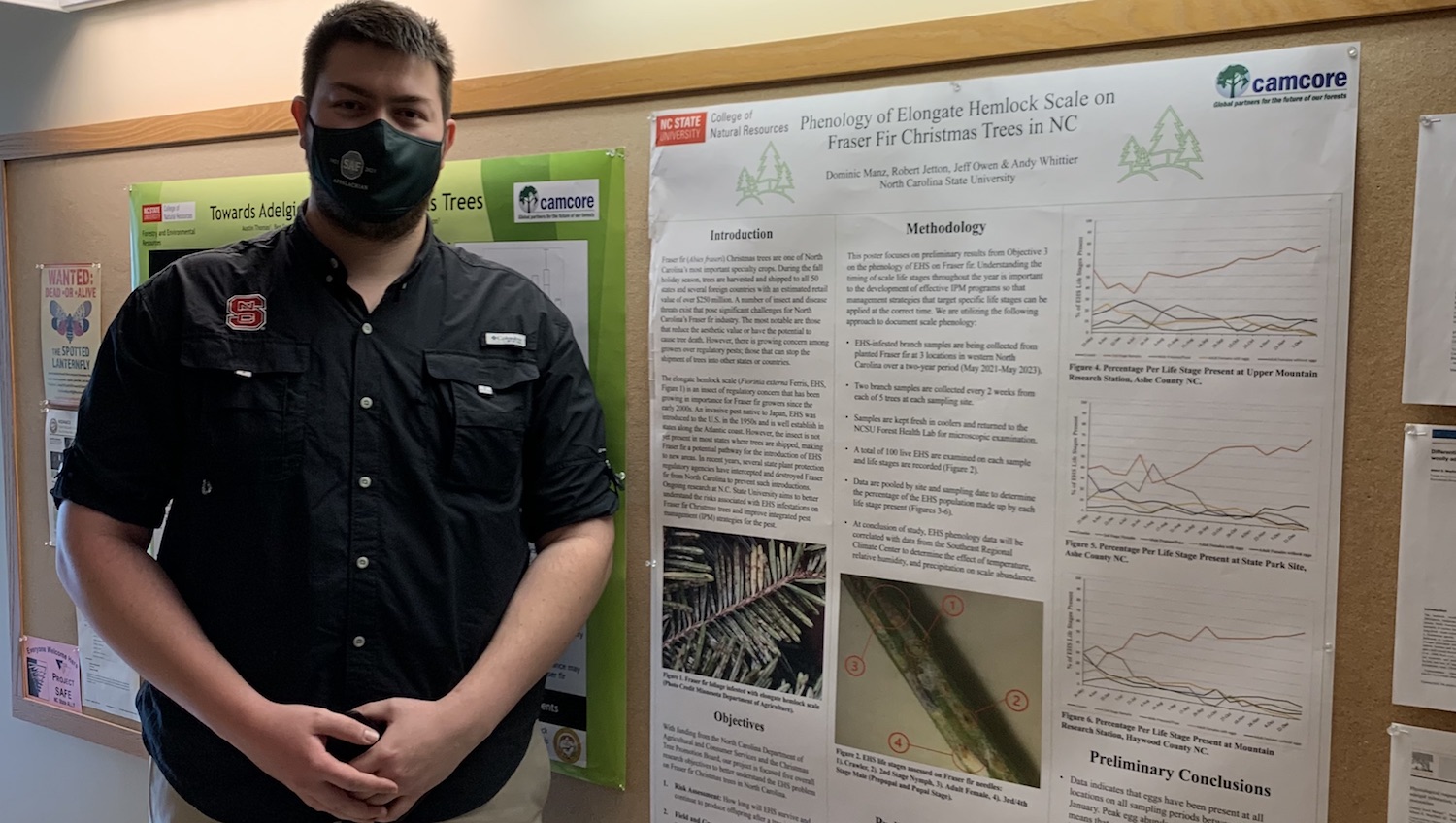2021 APSAF Conference Best Poster Presentation: Dominic Manz

Brief summary of the 2021 APSAF Conference (in 2022): I was awarded the best poster presentation at this year’s meeting of the Appalachian Chapter of the Society of American Foresters (APSAF) to celebrate its centennial birthday. The conference was held in Asheville, NC from January 26th to January 28th, 2022. The centennial birthday was last year but unfortunately, due to covid restrictions, had to be postponed to a later date. Schools represented were Clemson, Virginia Tech, Duke, Haywood Community College and of course NC State University. A large portion of the conference was dedicated to celebrating the 100th birthday of the chapter. This involved storytelling, reminiscing, followed by student presentations. The student presentations were held on Friday morning (January 28th) whereas the poster presentations were ongoing throughout the conference. We did have some wonderful speakers for the student presentation displaying their work and it was a great first conference experience, meeting people, catching up with professors and professionals and learning of other people’s research.
What is the title and a summary of your research? My poster was on the “Phenology of Elongate Hemlock Scale on Fraser Fir Christmas Trees in NC”. However, this is “only” one of three projects I’m involved with as part of my graduate work. The phenology study shown on the poster is currently ongoing and will entail 2 years of data on the timing and proportion of Elongate Hemlock Scale (Fiorinia externa, Ferris, EHS) life stages present. We are evaluating trends of EHS presence, timing and proportion of life stages present based on climatic and seasonal conditions. EHS is a hard scale insect, meaning that the crawler stage, which is the 1st stage nymph and one of only two mobile stages and lacking the waxy protection of more advanced stages, is the most susceptible to (chemical) pest management. Knowing when the crawler stage is most abundant allows for more effective targeting of treatments. Our preliminary results indicate that all stages of the EHS life cycle are present in the period between May and January. This is in agreement with previous studies. Another important, however preliminary, take away from this study is the presence of mature females and the presence and number of eggs. The preliminary results suggest that there are multiple peaks of number of eggs present throughout the period we have collect data so far. Peak egg abundance during the harvest season, means that cut trees have a higher potential of introducing EHS to new locations.
Can you tell us a little about your program of study? I have been involved with Forest Health since I graduated with my BS in Forest Management in 2018. This aspect of forestry has allowed me an alternative to production forestry, which is what my undergraduate curriculum focused on. Forest Health includes a wide spectrum of topics, including but not limited to insects, diseases, and abiotic issues like climate change. Most of the work done in the new Forest Health Lab, run by Prof Robert Jetton and Prof Kelly Oten, revolves around learning more about invasive insects and their interactions with their hosts and evaluating various management technique to minimize the effect the pest has on the host. We have students working on Emerald Ash Borer, Elongate Hemlock Scale, and other pests as part of their undergraduate and graduate work. For me, I like Forest Health and my projects in particular, because for one, you get to be hands on, talking to growers, get stung by yellow jackets, collect your samples and field data and then take them to the lab for further analysis. I see it as getting the best of both worlds. You get to spend time outside and inside, although not always well balanced.
What influenced you to go into this field of study? I have grown fascinated with insects after taking Prof Jetton’s FOR430 class (Introduction to Forest Health) in my Junior, and Prof Oten’s FOR402 in my Senior year. Having gone through the Forest Management curriculum, I knew I wanted to do something else in the field of Forestry. Over time I found that, despite Forest Health including insect and disease pests among others, I am more drawn to the insect side of things. These past few years working with Prof Jetton, the Forest Health lab team, the extension specialists, the growers and myself that have been working to learn more about the invasive EHS and it has honestly been a great time. Hopefully we can keep up the pace after having a productive 2021, rebounding from covid in 2020, and finish these projects in 2023.
What do you plan to do after you graduate? As an international student, I have the opportunity to work in the US temporarily after graduating and working towards permanent residency or move back home to Switzerland. Being a dual citizen with Italy, allows me to work anywhere in Europe, looking at you Denmark (big Christmas tree producer). All jokes aside, without getting too specific there are many factors that come into play and as much as I liked living and studying in the US and NC for over 7 years, maybe it’s time for a change. That can be in a different state in the US or another country entirely. I would like to pursue academia to teach and do research. Ideally, I see myself working for a smaller college or university in more cooler regions of the world, as I have not yet grown accustomed to southern summers and miss the snow. There is limited application of Forest Health in the private sector, thus I see myself working with government entities to work on monitoring and managing invasive pests also.
- Categories: